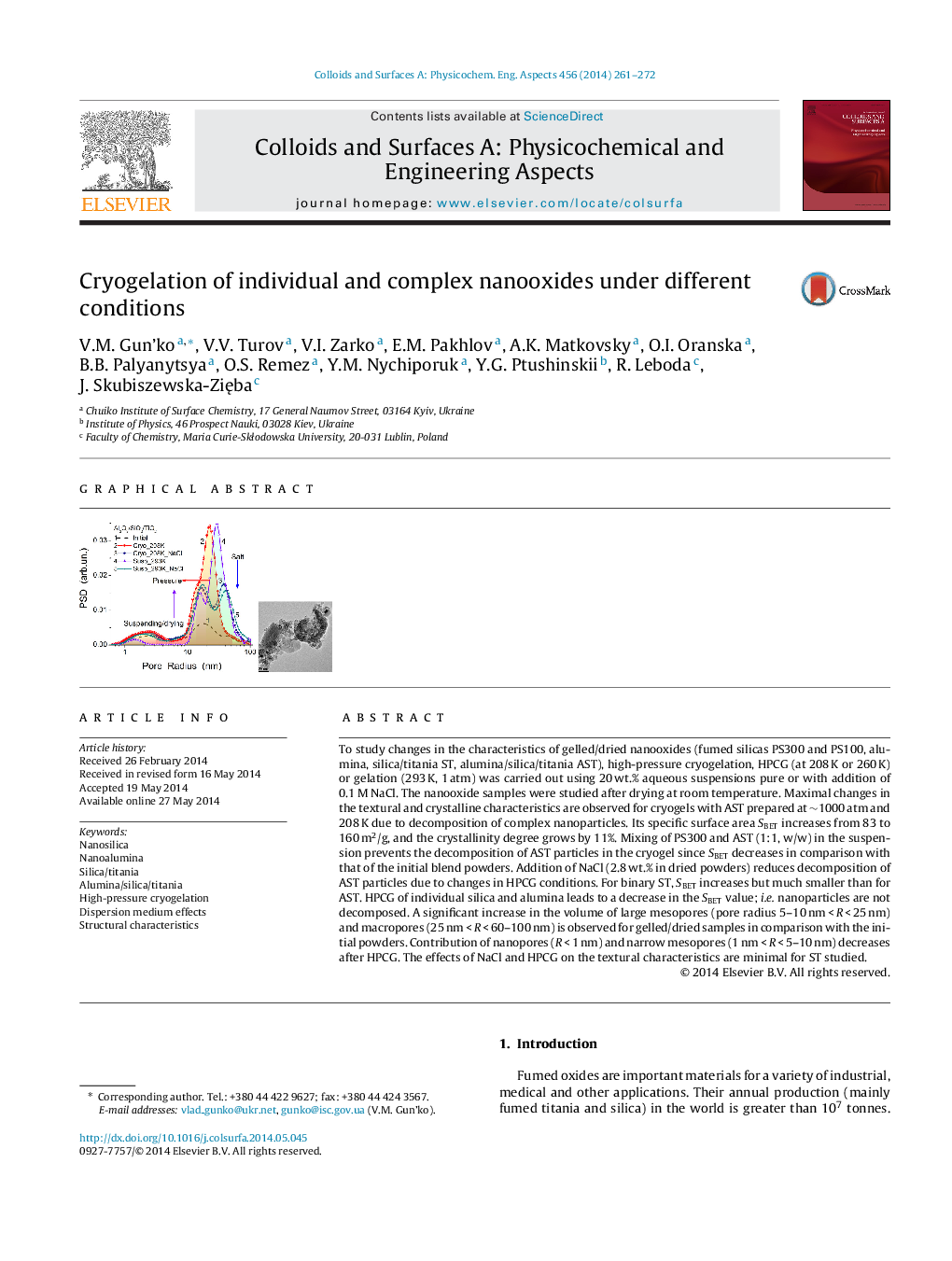| Article ID | Journal | Published Year | Pages | File Type |
|---|---|---|---|---|
| 592654 | Colloids and Surfaces A: Physicochemical and Engineering Aspects | 2014 | 12 Pages |
Abstract
To study changes in the characteristics of gelled/dried nanooxides (fumed silicas PS300 and PS100, alumina, silica/titania ST, alumina/silica/titania AST), high-pressure cryogelation, HPCG (at 208 K or 260 K) or gelation (293 K, 1 atm) was carried out using 20 wt.% aqueous suspensions pure or with addition of 0.1 M NaCl. The nanooxide samples were studied after drying at room temperature. Maximal changes in the textural and crystalline characteristics are observed for cryogels with AST prepared at â¼1000 atm and 208 K due to decomposition of complex nanoparticles. Its specific surface area SBET increases from 83 to 160 m2/g, and the crystallinity degree grows by 11%. Mixing of PS300 and AST (1:1, w/w) in the suspension prevents the decomposition of AST particles in the cryogel since SBET decreases in comparison with that of the initial blend powders. Addition of NaCl (2.8 wt.% in dried powders) reduces decomposition of AST particles due to changes in HPCG conditions. For binary ST, SBET increases but much smaller than for AST. HPCG of individual silica and alumina leads to a decrease in the SBET value; i.e. nanoparticles are not decomposed. A significant increase in the volume of large mesopores (pore radius 5-10 nm < R < 25 nm) and macropores (25 nm < R < 60-100 nm) is observed for gelled/dried samples in comparison with the initial powders. Contribution of nanopores (R < 1 nm) and narrow mesopores (1 nm < R < 5-10 nm) decreases after HPCG. The effects of NaCl and HPCG on the textural characteristics are minimal for ST studied.
Related Topics
Physical Sciences and Engineering
Chemical Engineering
Colloid and Surface Chemistry
Authors
V.M. Gun'ko, V.V. Turov, V.I. Zarko, E.M. Pakhlov, A.K. Matkovsky, O.I. Oranska, B.B. Palyanytsya, O.S. Remez, Y.M. Nychiporuk, Y.G. Ptushinskii, R. Leboda, J. Skubiszewska-ZiÄba,
